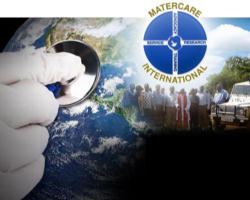HUMAN/ANIMAL CHIMERAS THROUGH PLURIPOTENT STEM CELLS
By Fr Jacques Suaudeau
Ecclesiastical Assistant FIAMC
Pluripotent stem cells are defined by their capacity to differentiate into all three tissue layers that comprise the body. When transplanted into an embryo they form chimeric embryos, with cells coming from the embryo and cells derived from the transplanted pluripotent stem cells. Chimera formation, generated by stem stem transplantation in the embryo, is a stringent assessment of stem cell pluripotency.[1] Mouse Embryonic stem cells (mESCS) and mouse induced pluripotent stem cells, injected in a 8 cell embryo give chimeric embryos, and this is the most efficient method for assessing stem cell pluripotency.[2]
Because a shortage of donor organs has become a major obstacle to the expansion of organ transplantation programs, and because a good tissue matching of the transplanted organ with the recipient is a main condition for the success of transplantation, one of the ultimate goal of regenerative medicine is to grow organs using the patient’s own stem cells and to transplant those organs into the patient. With the development of induced pluripotent stem cell technology we are now able to obtain patient-derived pluripotent stem cells which could allow to reach this goal. However, the complexity of organogenesis hinders in vitro generation of organs derived from a patient’s iPSCs. A solution would be to grow into an animal the organ developed from patient’s iPSCs. This could be achieved using the capacity of pluripotent stem cells to generate interspecies chimeric embryos, with cells within the embryo derived from the transplanted pluripotent stem cells. To reach that goal, the human iPSCs transplanted into an animal embryo – for example a pig blastocyst – would be directed toward the growth of the desired organ.
This can be achieved through blastocyst complementation technique in organogenesis-disabled embryos. Blastocyst complementation was first reported by Chen et al (1993)[3]. They demonstrated that deficiency of T and B lymphocyte lineages in RAG2-deficient mice was complemented by injecting normal mouse embryonic stem cells (mESCs) into Rag2 deficient mouse-derived blastocyst. The T and B cells generated in the complemented animals were not host T or B lymphocytes but derived from the mESCs.
Kobayashi et al (2010)[4] hypothesized that if pluripotent stem cells were injected into blastocysts obtained from mutant mice in which the development of a certain organ was precluded by genetic manipulation, thereby leaving a niche for organ development, the pluripotent stem cells would developmentally compensate for the defect and form the missing organ. They assessed this hypothesis with the Pdx1 deficient mice who die soon after birth due to pancreatic insufficiency., They injected rat wild-type iPSCS into PDx1 deficient mouse blastocysts, and found that these pluripotent stem cells generated in the Pdx1 deficient mice a functioning rat pancreas. Defective cells in the pancreas were totally replaced and pancreas was formed almost entirely by injected rat iPSCs derived cells. The chimeric mice had normal pancreatic function and survived to adulthood.
Isotani et al (2011)[5] injected rat embryonic stem cells into blastocysts of nu/nu mice lacking a thymus, and the resulting chimeras produced thymus derived from rat ES cells in their bodies.
They concluded that the interspecies chimeric animal model could provide a method for the derivation of various organs from ES or iPS cells.
Usui et al (2012)[6] have used the Sall1 deficient mice that die soon after birth because of kidney agenesis or severe digenesis, whereas structures formed independently of Sall1 such as the ureters and bladder are present. They injected mouse ESCs or iPSCs in Sall1 deficient mouse blastocysts. The defective kidney cells in the resulting mouse were totally replaced, and the kidneys were entirely formed by the injected mouse iPSCS or ESCS derived cells, except for the structures not under the influence of Sall1 expression. Thus blastocyst complementation could be extended to generate iPSCs-derived kidneys.
Matsunari et al (2013)[7] developed cloned porcine embryos with an apancreatic phenotype. Complementation of these embryos with allogenic blastomeres created functioning pancreas in the vacant niche. This indicated that a missing organ could be generated from exogenous cells when functionally normal pluripotent cells chimerize a cloned dysorganogenetic embryo. The feasibility of blastocyst complementation using cloned porcine embryos indicated therefore a way to generate in vivo functional organs from xenogenic pluripotent stem cells in large animals. The idea of getting human organs through the creation of human/pigs chimeric embryos using hiPSCs or hESCs became actual.[8]
These results indicate therefore that blastocyst complementation technique in organogenesis-disabled embryos could provide a valid solution to the present shortage of organs for transplantation, through the growth in animal hosts of human organs developed from hiPSCS . But they were obtained with mouse iPSCS or ESCS. miPSCs and mESCs have a high level of pluripotency. « naive » or « ground state »[9], dependent on LIF (leukemia inhibitory factor), comparable to that observed in the blastomeres of 4-8 cells. Human iPSCS and ESCs have not the same capacity to chimera formation than mouse iPSCs or ESCs because they are “primed” pluripotent stem cells, dependent from bFGF (basic fibroblast growth factor). Therefore the ability of human pluripotent stem cells to form interspecies embryonic chimeras is doubtful, and also doubtful the possibility of getting human organs for transplantation through that method.
Mascetti and Pedersen (2015)[10] however observed that mouse epiblast stem cells mEpiSCs, which are comparable in pluripotency to hiPSCS and hESCs, do form chimeras with the post-implantation mouse embryo.[11] These authors showed using a stage-matching approach that human induced pluripotent stem cells (hipSCS) and human embryonic stem cells (hESCs) have the capacity to participate in normal mouse development when transplanted into gastrula stage embryos, providing in vivo functional validation of hiPSCs pluripotency. In these conditions, Mascetti and Pedersen reported that hiPSCS and hESCs form interspecies chimeras with high efficiency, colonize the embryo in a manner predicted from developmental mapping, and differentiate into each of the three primary tissue layers.
Wu et al (2015)[12] have indicated one another way of resolving the problem of the “primed state” of hiPSCS and hESCS, in order to get in a feasible way human/animal chimeras. They individualize, by modulating culture parameters, a stem-cell type which they called “region-selective pluripotent stem cells (RS-PSCs) which could be efficiently obtained from human pluripotent stem cells, and which generate post-implantation interspecies chimaeric embryos.
If the possibility of getting human/animal chimeric embryos using hiPSCs or hESCs, or RS-PSCs, is confirmed, then the way would open up for going ahead in the blastocyst complementation method to get human organs growing in animal hosts – that is pigs.
But remains the ethical obstacle.
The realization of such a chimerism with some human iPSCs injected in an organogenesis-disabled animal blastocyst could raise a serious ethical problem, as mentioned by R.Lanza, in a short note in 2007[13]. The hiPSCS or hESCS injected in animal blastocyst, even if they will go preferentially in the “niche” left empty by the organogenesis disabling, will also reach other tissues and organs. Human/animal chimeras which would contain human neural or in which cells derived from human iPSCS participate in the germ-line would be particularly worrisome[14]. If the creation of human organs in an animal do not bring per se a serious ethical problem, the blastocyst complementation method do raise question because it doesn’t exclude the contribution of the injected iPSCs to the development of various tissues, others than the human organ which is intended, including neural cells and germ cells. The risk of such an accident is nevertheless limited: if some human neurons are found, present in the brain of a pig because of a chimerism it is probable that such neurons functions as pig neurons, being influenced by the pig neuronal environment rather than from their genoma. To prevent such a circumstance a proposal would be to drive the contribution of the iPSCs toward a specific type of tissue. It would be also possible to silence (knocking out) the genes responsible for neuronal development and gamete development in the iPSCs, prior to transplantation in the animal blastocyst.
Hermeren[15] considered recently this ethical problem of man/animal chimeras created through the injection of human pluripotent stem cells, hiPSCS or hESCS in mouse blastocysts. There are no regulations at present governing this type of experiment, although it raises problem. Hermeren considered in particular some disturbing experiments (Steven Goldman’s researches) in mice in which the authors replaced completely the forebrain glial cells by human glial cells, so creating a “humanized” mouse which showed indeed greater cognitive faculties.. Hermeren concludes his article by saying that the tranquillizing statements about this kind of experiment have to be reconsidered, because this question of mice humanized at the cognitive level is ethically serious.
Kobayashi et al (2015)[16] tried to answer the ethical controversy raised by this possibility for human pluripotent stem cells, when injected into an animal blastocyst, to generate neural cells or germ cells. They did recognize that blastocyst complementation, which exploits the capacity of pluripotent stem cells to participate in forming chimeras, does not however exclude contribution of these pluripotent stem cells to the development of tissues-including neural cells or germ-cells, other than those specifically targeted by disabling of organogenesis. This fact provokes ethical controversy if human pluripotent stem cells are used. The authors showed in their study that forced expression of Mix-like protein could be used to guide contribution of pluripotent stem cells to endodermal organs after blastocyst injection. They applied this method to generate functional pancreas in pancreatogenesis disabled Pdx1 knockout mice using a tetraploid-based organ-complementation method.
At the time being, considering all the incertitudes regarding the fate of human pluripotent stem cells when injected into animal blastocyst, it seems indicated to prohibit the creation of human/animal chimeras through pluripotent stem cells.
[1] Mascetti VL, Pedersen RA, Human-Mouse Chimerism Validates Human Stem Cell Pluripotency, Cell Stem Cell, 7 january 2016, vol.18, n°1, pp.67-72.
[2] Guo J, Wu B, Li S, Bao S, Zhao L, Hu S, Sun W, Su J, Dai Y, Li X, Contribution of Mouse Embryonic Stem Cells and Induced Pluripotent Stem Cells to Chimeras through Injection and Coculture of Embryos, Stem Cells International, 2014;:409021. doi: 10.1155/2014/409021.
[3] Chen J, Lansford R, Stewart V, Young F, Alt FW, RAG-2-deficient blastocyst complementation: an assay of gene function in lymphocyte development, Proceedings of the National Academy of Science, USA, 15 May 1993, vol 90 n°10, pp.4528-4532.
[4] Kobayashi T, Yamaguchi T, Hamanaka S, Kato-Itoh M, Yamazaki Y, Ibata M, Sato H, Lee YS, Usui J, Knisely AS, Hirabayashi M, Nakauchi H, Generation of rat pancreas in mouse by interspecific blastocyst injection of pluripotent stem cells, Cell, 3 September 2010, vol.142, n°5, pp.787-799.
[5] Isotani A, Hatayama H, Kaseda K, Ikawa M, Okabe M, Formation of a thymus from rat ES cells in xenogeneic nude mouse↔rat ES chimeras, Genes Cells, April 2011, vol.16, n°4, pp.397-405.
[6] Usui J, Kobayashi T, Yamaguchi T, Knisely AS, Nishinakamura R, Nakauchi H, Generation of kidney from pluripotent stem cells via blastocyst complementation, American Journal of Pathology, June 2012, vol.180, n°6, pp.2417-2426.
[7] Matsunari H, Nagashima H, Watanabe M, Umeyama K, Nakano K, Nagaya M, Kobayashi T, Yamaguchi T, Sumazaki R, Herzenberg LA, Nakauchi H, Blastocyst complementation generates exogenic pancreas in vivo in apancreatic cloned pigs. Proceedings of the National Academy of Science, USA, 19 March 2013, vol.110, n°12, pp.4557-4562.
[8] Normile D, Chimeric embryos may soon get their day in the sun, Science, 28 june 2013, vol.340, n°6140, pp. 1509-1510.
[9]Ying QL1, Wray J, Nichols J, Batlle-Morera L, Doble B, Woodgett J, Cohen P, Smith A, The ground state of embryonic stem cell self-renewal, Nature, 22 May 2008, vol.453, n°7194, pp.519-523.
[10] Mascetti VL, Pedersen RA., Human-Mouse Chimerism Validates Human Stem Cell Pluripotency, Cell Stem Cell, 16 Décembre 2015, pii: S1934-5909(15)00515-9. doi: 10.1016/j.stem.2015.11.017. [Epub ahead of print]
[11] Huang Y, Osorno R, Tsakiridis A, Wilson V, In Vivo differentiation potential of epiblast stem cells revealed by chimeric embryo formation, Cell Report, 27 december 2012, vol.2, n°6, pp.1571-1578.
Kojima Y, Kaufman-Francis K, Studdert JB, Steiner KA, Power MD1, Loebel DA, Jones V, Hor A, de Alencastro G, Logan GJ, Teber ET, Tam OH, Stutz MD, Alexander IE, Pickett HA, Tam PP,. The transcriptional and functional properties of mouse epiblast stem cells resemble the anterior primitive streak, Cell Stem Cell, 2 january 2014,, vol.14, n°1, pp.107-120..
[12] Wu J, Okamura D, Li M, Suzuki K, Luo C, Ma L, He Y, Li Z, Benner C, Tamura I, Krause MN, Nery JR, Du T, Zhang Z, Hishida T, Takahashi Y, Aizawa E, Kim NY, Lajara J, Guillen P, Campistol JM, Esteban CR, Ross PJ, Saghatelian A, Ren B, Ecker JR, Izpisua Belmonte JC, An alternative pluripotent state confers interspecies chimaeric competency,Nature, 21 May 2015, vol.521, n°7552, pp.316-321.
[13] Lanza R, Stem cell breakthrough: Don’t forget Ethics, in: “Science” 318 (2007) 5858, 1865 Science. 2007 Dec 21;318(5858):1865..
[14]Shaw D, Dondorp W, Geijsen N, de Wert G, Creating human organs in chimaera pigs: an ethical source of immunocompatible organs? Journal of Medical Ethics, Dewember 2015, vol.41, n°12, pp.970-974.
[15] Hermerén G.,, Ethical considerations in chimera research, Development, 1 January 2015, vol.142, n°1, pp.3-5.
[16] Kobayashi T, Kato-Itoh M, Nakauchi H,Targeted organ generation using Mixl1-inducible mouse pluripotent stem cells in blastocyst complementation, Stem Cells and Development, 15 january 2015, vol.24, n°2, pp.182-189.










